Preparing for a mattress deep-clean
Before you dive into the nitty-gritty of mattress cleaning, let's gear up with the right tools and set the stage. 🧤
Step 1: Gather your cleaning arsenal
You'll need a vacuum cleaner with an upholstery attachment, baking soda, and your choice of cleaning solution.
Whether you opt for a store-bought cleaner or a homemade mix (like diluted dish soap or white vinegar), ensure it's suitable for your mattress type.
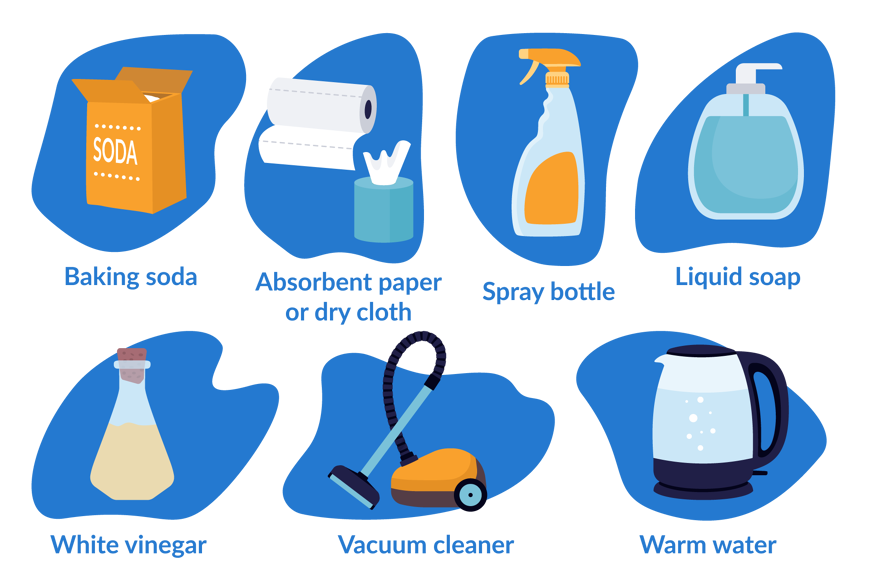
Don't worry: We take you through some of the best cleaning solutions below, but you can also check out our guide on the best mattress cleaners to help you get started.
Step 2: Strip and clear
Off with the sheet, mattress topper, duvet, and pillows!
This is more than a decluttering act; it's about giving yourself a clear workspace. ✅
But, of course, this is also the first step in ensuring your entire bed setup is sparkly clean.
Wash your bedding on a hot cycle to kill any mites or bacteria hiding there.
This is also a good time to wash your mattress protector, duvets, and pillows.
Don’t forget that you also want to remove any mattress covers - most bed-in-a-box mattresses come with removable and washable top covers that you can simply pop into your washing machine.
Please be aware, though, that many of the how-to-clean steps below apply to mattresses with non-removable covers - you need to be careful about using any cleaning products on naked foams, especially if you have a latex mattress or a memory foam mattress.
Step 3: The initial cleanse: vacuuming
Before diving into any spot-cleaning, give your mattress a thorough vacuum.
This will remove dead skin cells, hair, and those pesky dust mites that call your bed their home.
The cleaner your mattress surface, the more effective your deep clean will be.
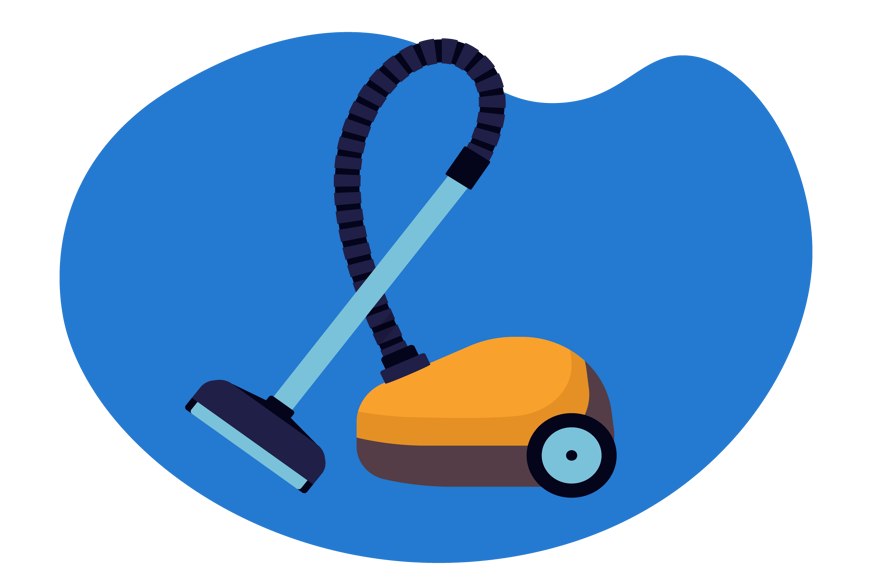
By following these steps, you're setting the stage for effective cleaning and taking a crucial step towards a healthier sleeping environment.
Let's keep the momentum going!
How to clean a stained mattress
Mattresses are prone to various types of stains, each requiring a different approach for removal.
Here, we discuss how to tackle the most common mattress stains - from sweat and blood to urine and other bodily fluids. 🔍
Whether you opt for DIY cleaning solutions or commercial cleaners, the key is to act quickly and use the right technique.
How to clean sweat stains from a mattress
Sweat stains are the most common stains you'll find on mattresses, generally identified as large, yellow blotches.

Using a waterproof mattress protector is the smartest way to prevent these stains from occurring in the first place, but what can you do if the damage is already done?
Here are our top tips.
The cleaning solution you'll need:
- DIY solution: Mix equal parts cold water and distilled white vinegar.
- Commercial cleaners: Opy for enzyme-based cleaners.
And here's a step-by-step guide on how to clean sweat stains from your mattress:
- Blot the stain with a dry cloth to absorb as much moisture as possible.
- Apply the cleaning solution using a spray bottle or a damp cloth.
- Gently dab the stain and don't rub to avoid pushing the stain deeper.
- Let it sit for 10 - 15 minutes.
- Blot again with a dry cloth and let it air dry.
This should remove sweat stains from your mattress.
How to clean blood off a mattress
The important thing about cleaning blood off your mattress is to act fast. ⏰

Here are our top tips.
The cleaning solution you'll need:
- DIY solution: Combine 2 parts cold water with 1 part baking soda. An effervescent aspirin tablet can also be effective if applied circularly over the stain with a glass or spoon.
- Commercial cleaners: Enzyme-based cleaners are effective, and hydrogen peroxide can help with stubborn, dry stains.
And here's a step-by-step guide on how to clean blood stains from your mattress:
- Blot as much blood as possible with a clean, dry cloth.
- Wetting the stain slightly with a sponge or washcloth is sometimes helpful if the stain is dry.
- Gently apply the cleaning solution to the stain.
- Let the solution sit for 30 minutes.
- Blot the area with a damp cloth to remove excess solution.
- Allow to air dry.
This should get rid of nasty blood stains.
How to clean urine from a mattress
Whether you've had a nighttime accident or a pet or a young child has had an oopsie, urine stains on a mattress are never pleasant.
But we're here to help.

The cleaning solution you'll need:
- DIY solution: Mix 3 tablespoons of baking soda, 8 ounces of hydrogen peroxide, and a few drops of dish soap together.
- Commercial cleaners: Look for urine-specific enzyme cleaners.
And here's a step-by-step guide on how to clean pee out of your mattress:
- Blot up as much urine as possible.
- Spray or gently apply the cleaning solution on the stain.
- Leave it for about an hour.
- Blot the area dry and let it air out.
This should leave your mattress clean and urine-stain-free!
How to clean vomit from your mattress
This may be more common with children or pets, but you never know when a bad illness can get you, too.
The cleaning solution you'll need:
- DIY solution: Mix warm water and mild detergent or white vinegar.
- Commercial cleaners: Use enzyme-based cleaners for effective results.
And here's a step-by-step guide on how to clean vomit out of your mattress:
- Start by scraping off as much vomit as possible without spreading it further.
- Blot the area with a dry cloth to soak up moisture.
- Sprinkle baking soda over the area and let it sit for about 15 minutes for odour absorption.
- Prepare your cleaning solution in a spray bottle.
- Lightly spray or dab the solution onto the stain.
- Gently blot the stain; avoid rubbing to prevent the vomit from going deeper into the mattress.
- Allow the solution to work on the stain for 10 - 15 minutes.
- Blot the area again with a clean, dry cloth and let the mattress air dry, ideally in a well-ventilated space or in direct sunlight.
Don't forget to check out the section on deodorisation below, which will help you eliminate any nasty odours.
How to clean coffee stains from your mattress
Whether you enjoy your morning cup of coffee in bed or have spilt some hot chocolate or tea while snuggling up with a movie, there's nothing worse than accidentally getting your gorgeous beverage all over your expensive mattress.
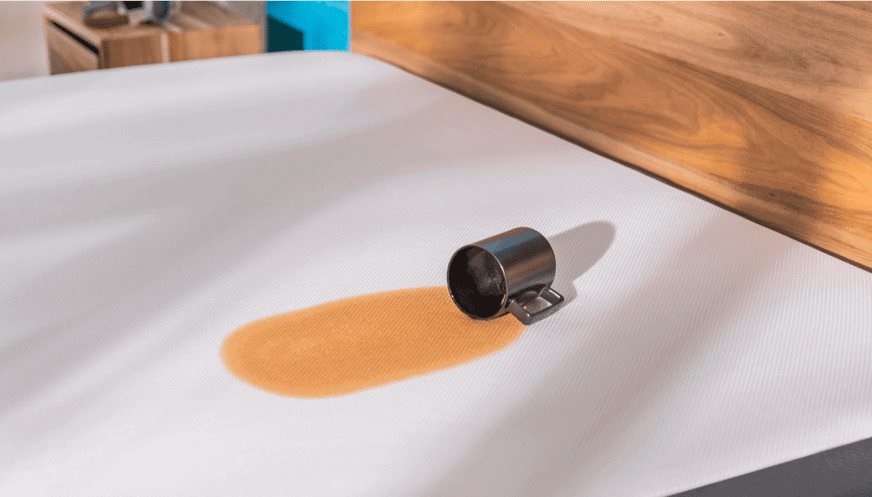
The cleaning solution you'll need:
- DIY solution: Create a mixture of one part dish soap and two parts cold water. Alternatively, coarse salt or rice grains can effectively absorb moisture.
- Commercial cleaners: Mild laundry detergent or upholstery cleaner can be effective.
And here's a step-by-step guide on how to clean coffee stains from your mattress:
- Blot up as much coffee (or other beverage) as possible with a clean, dry cloth.
- Apply the cleaning solution to the stain using a cloth or a spray bottle.
- Gently dab the stain with the solution, avoiding rubbing or scrubbing.
- Allow the solution to sit on the stain for 5 - 10 minutes.
- Blot the area with a damp, clean cloth to rinse the cleaning solution.
- Pat the area dry with a dry cloth and let the mattress air dry completely.
Your mattress should be as good as new.
Top tips for treating stains without causing damage
Regardless of what type of mattress you have or which stain you're dealing with, it's important to keep a few key things in mind to avoid damaging your mattress.
- Tackle all stains as soon as possible to prevent them from setting in.
- Be cautious with the amount of liquid you use. Too much liquid can saturate the mattress and cause further issues.
- Always blot gently. Rubbing can damage the mattress fabric and spread the stain.
- Test any cleaner on a small, inconspicuous area first to check for adverse reactions.
- After cleaning, ensure the mattress is completely dry before remaking your bed. A damp mattress can lead to mould and mildew.
If a stain persists, repeat the cleaning process or consider a professional cleaner for stubborn stains (more below).
How to clean a smelly mattress
Removing odours from your mattress is crucial for maintaining a fresh, hygienic sleeping environment.
It’s particularly important if you’ve recently cleaned up spills or stains (particularly urine stains), as these can leave residual smells.

Regular deodorising also helps combat the natural accumulation of sweat and oils that can lead to musty odours over time.
Using baking soda to remove odours
Baking soda is a highly effective, natural deodoriser ideal for freshening your mattress.
Here’s how to use it:
- Sprinkle a generous amount of baking soda over the entire surface of your mattress.
- Leave it to sit for at least 30 minutes. For deeper odours, you can leave it for up to a few hours.
- Vacuum the baking soda off from your mattress thoroughly, using an upholstery attachment to ensure all residue is removed.
This should leave your mattress smelling clean and fresh.
Adding a scent boost when deodorising your mattress
If you're looking for a scent boost and deodorisation, consider adding a few drops of your favourite essential oil to the baking soda before sprinkling it on your mattress. 🪻
Lavender, chamomile, or eucalyptus are popular for their soothing and refreshing properties.
Tea tree also has special anti-bed-bug properties.
You can also mix 1 - 2 drops of essential oils with water and spritz it lightly over your mattress for a pure scent boost, but avoid using perfumes as these may stain your mattress.
How to deep clean a mattress
Deep cleaning your mattress goes beyond removing stains or surface dirt.
It's about thoroughly sanitising and refreshing the entire mattress.
This is especially important if you suffer from allergies or asthma, as it can help remove dust mites and other allergens.
Ideally, deep clean your mattress every six months to maintain optimal cleanliness and hygiene.
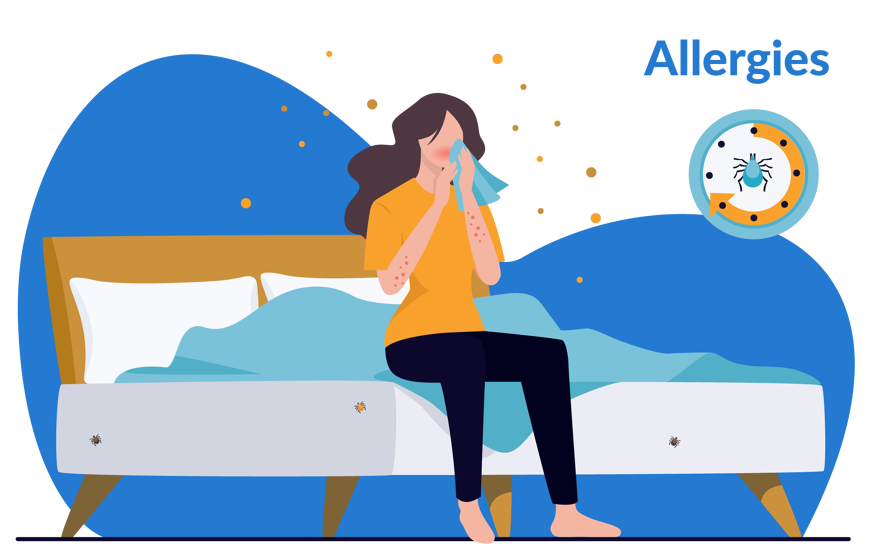
Two key ways to deep-cleaning your mattress are steam cleaning [1] and relying on commercial enzyme-based cleaners [2].
How to steam clean your mattress
Steam cleaning effectively penetrates deep into the mattress fabric, removing allergens, dust mites, and deep-seated dirt.
It's also a great eco-friendly option as it only relies on water. 💦
Here's how to steam clean your mattress:
- Use a steam cleaner with an upholstery attachment. Start from the top of the mattress and work your way down in slow, overlapping strokes.
- Allow the mattress to dry completely before remaking the bed. This could take several hours, so ensure good ventilation or use a fan to speed up the process.
If not done correctly, steam cleaning can leave your mattress damp, leading to mould or mildew growth.

Some mattress materials may not be suitable for the high heat of steam cleaning.
How to use enzyme cleaners to disinfect your mattress
Enzyme cleaners effectively break down organic matter like sweat, urine, or blood.
They work by breaking down the structure of the stain, making it easier to remove.
This is especially helpful for tough, set-in stains or odours.
How to use enzyme cleaners:
- Apply the enzyme cleaner to the stained area, following the product’s instructions.
- Allow it to sit for the recommended time.
- Blot up the excess liquid and let the mattress dry thoroughly.
Always test enzyme cleaners on a small, inconspicuous mattress area first to ensure they do not cause discolouration.
How to address allergens and dust mites
Dust mites [3] and allergens in your mattress can contribute to various allergic reactions, including sneezing, itching, and asthma.
These tiny creatures thrive in a mattress's warm, humid environment and feed on dead skin cells. 🦠
Even if you have a sparkly-clean mattress that smells wonderful, it's worth giving it a regular dust mite clean to keep allergies at bay.
Vacuum your mattress regularly
While you don't have to deep-clean your mattresses every time, regular vacuuming can significantly reduce the presence of dust mites and allergens.
Using a vacuum with a HEPA filter [4] is most effective, as it can trap even the smallest particles.
Aim to vacuum your mattress every time you change your sheets.
Air out your mattress
Allowing your mattress to air out can also help. 💨
This removes any excess moisture built up and prevents any future mould or mildew problems.
The sun's UV rays are also a natural disinfectant and can kill microorganisms [5] living on the surface of your mattress.

On a sunny day, strip your bed and let the sunlight bathe your mattress for a few hours.
This not only tackles mites and allergens but also helps to eliminate any lingering odours.
By implementing these practices, you can maintain a cleaner, more allergen-free sleeping environment, enhancing the overall quality of your sleep and health.
Protect yourself by using a mattress protector
Finally, one of the best things you could do to protect yourself is investing in a mattress protector.
A mattress protector is a barrier, preventing dust mites and allergens from penetrating the mattress fibres.
You can look for protectors that are specifically designed to be anti-allergenic, but any good waterproof mattress protector will do.
They should be washed regularly, at least once every two months, in hot water to kill any mites that may have accumulated.
Our favourite UK waterproof mattress protectors:
When to call professional mattress cleaners
Sometimes, despite our best efforts, a mattress may need professional attention. 🧑🚒
Hiring a professional for mattress cleaning is best for tough situations like deep-seated blood or urine stains, water damage, or mould growth.
It's particularly useful for allergy sufferers, as professionals use advanced techniques to remove allergens and dust mites effectively.
However, it can be costly and means you can't use your mattress for a while after cleaning.
Generally, it's worth considering for serious issues that can't be resolved with home cleaning methods.
Maintenance tips: How to ensure your mattress stays in mint condition
Keeping your mattress in top condition is crucial not just for its longevity but also for ensuring a clean and healthy sleeping environment.
Regular maintenance can significantly extend the life of your mattress and improve your overall sleep quality.

Here are some essential tips for maintaining your mattress:
- If your mattress is double-sided, flipping it every 3 - 6 months helps even out wear and tear. Please keep in mind that many bed-in-a-box mattresses are one-sided mattresses.
- Rotate your mattress head to toe every 3 - 6 months, regardless of whether you have a one-sided or double-sided mattress.
- Keep your bedroom well-ventilated to avoid moisture buildup in the mattress.
- In humid climates, consider using a dehumidifier.
- Set a routine to vacuum your mattress every time you change your bed linen to remove dust and potential allergens.
- Use a waterproof mattress protector to guard against spills and stains.
- Quickly address any spills or accidents to prevent the liquid from soaking into the mattress.
- Minimise the risk of spills and stains by not eating or drinking in bed.
By incorporating these simple yet effective maintenance steps, you can safeguard your mattress against common issues and ensure that it remains comfortable, clean, and supportive for years to come.
Recognise when it's time for a new mattress
Even with meticulous care, every mattress has its expiry date.
On average, a good quality mattress can last between 7 to 10 years.
However, this can vary based on the type of mattress, materials used, and how well it's been maintained.
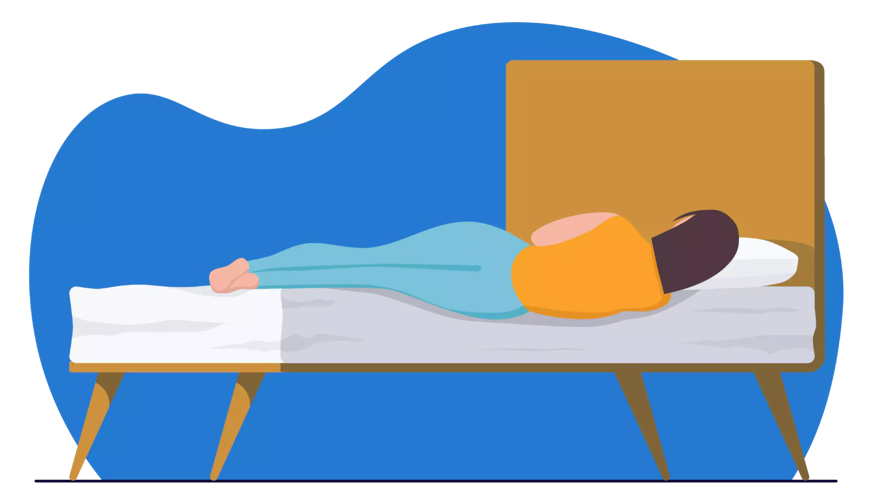
Knowing when it's time to replace your mattress can ensure you continue to enjoy quality, restful sleep.
Here are some tell-tale signs of wear and tear to look out for:
- Sagging: If your mattress dips in the middle or at the edges, it's no longer providing the support you need.
- Lumps and bumps: Over time, the internal structure of a mattress can break down, leading to uneven surfaces.
- Creaks and noises: Noises from a mattress, particularly inner spring or pocket sprung mattresses, when you move can indicate that the internal structure is deteriorating.
- Allergen build-up: If you wake up with allergies, it could be due to dust mites and other allergens that have accumulated over time in an old mattress.
- Discomfort: Increased back pain or discomfort while sleeping can signal that your mattress no longer supports your body correctly.
Remember, a good mattress is essential for a comfortable night's sleep and maintaining overall health and well-being.
If your mattress is showing these signs of wear and tear, it may be time to start shopping for a new one.
Luckily, you're already in the perfect place for that - check out our guide on the best mattresses in the UK to get started.
Or, check out some of our top recommendations below.
Some of our favourite mattresses in the UK:
Summing it all up: Why mattress cleaning matters
Maintaining a clean mattress is crucial for ensuring a hygienic, comfortable sleep environment.
Regular cleaning, spot treatment of stains, and addressing allergens are key to prolonging your mattress's lifespan and promoting better sleep health.
Employing prevention strategies like using mattress protectors and understanding when to seek professional help can also save time and effort.
However, recognising when it’s time to replace an old mattress is equally important for ensuring ongoing sleep quality.
By following these comprehensive care tips, you can enjoy a fresher, cleaner, and more restful sleeping space.
Table of Contents
Preparing for a mattress deep-clean
How to clean a stained mattress
How to clean a smelly mattress
How to address allergens and dust mites
When to call professional mattress cleaners
Maintenance tips: How to ensure your mattress stays in mint condition
Recognise when it's time for a new mattress


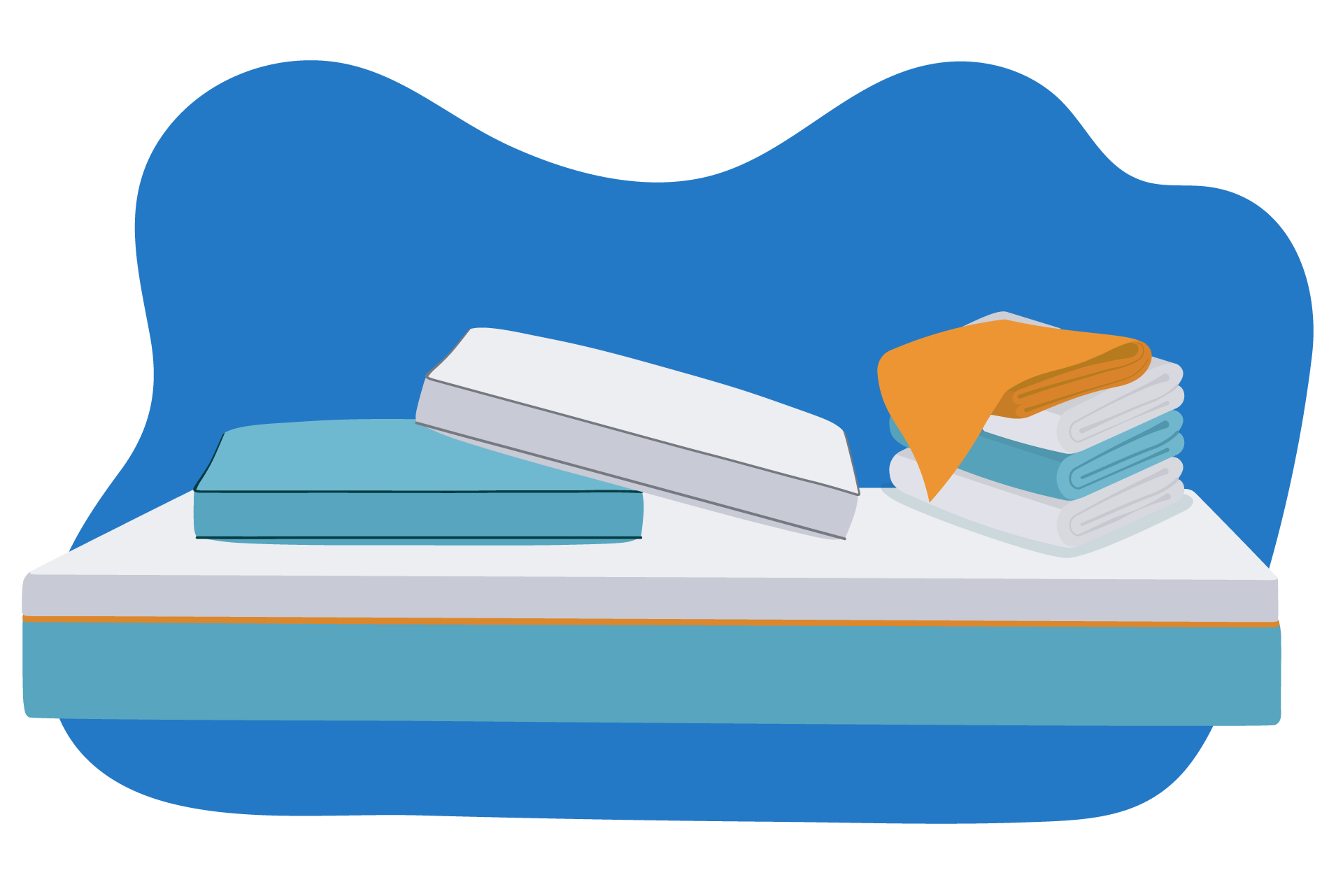




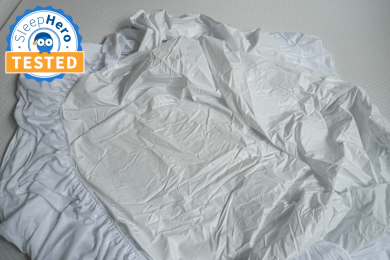



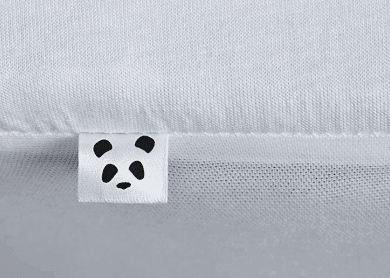

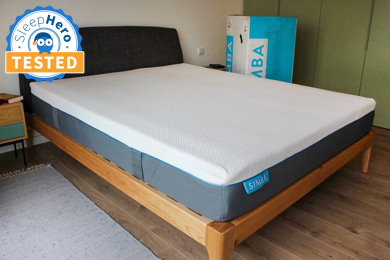


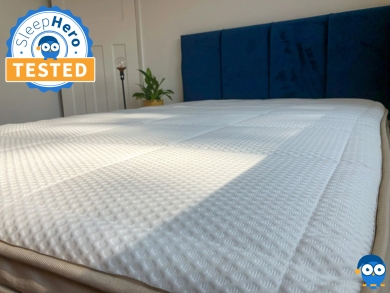

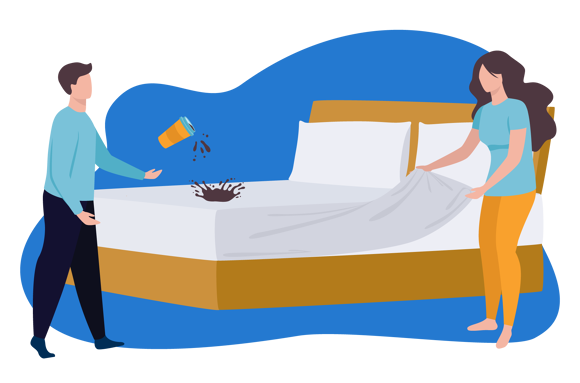

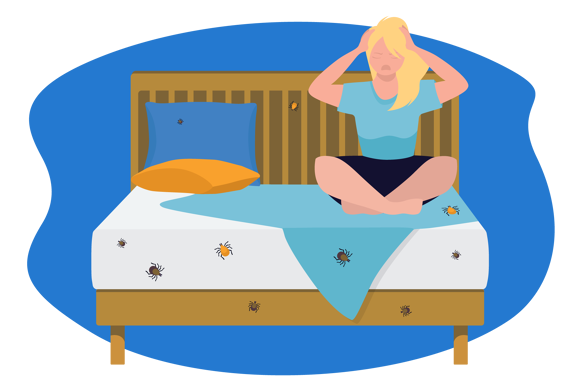


Alternatively, message us directly via the Contact Us page.